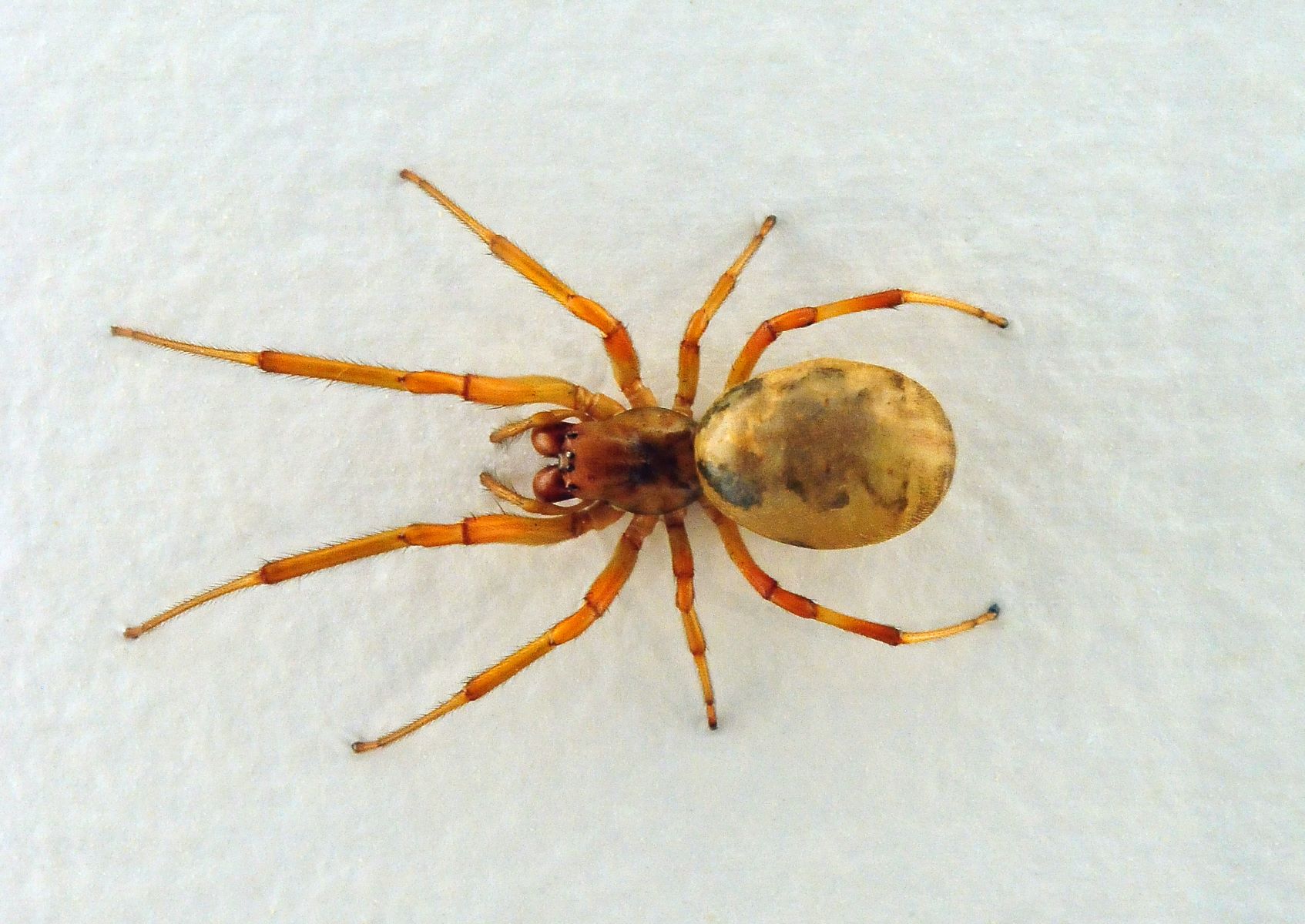
The leaf-curling spider is a fascinating creature that has captured the attention of both researchers and nature enthusiasts. This small spider, scientifically known as Phonognatha graeffei, is famous for its unique behavior of using leaves as a shelter. Found primarily in Australia, these spiders are known for their intricate web-building skills and remarkable adaptability.
In this article, we will delve into the world of the leaf-curling spider and discover 19 mind-blowing facts about this remarkable arachnid. From its incredible leaf-rolling technique to its predatory behaviors and impressive camouflage, we will explore the intriguing aspects of this species. So, get ready to be amazed and learn more about the leaf-curling spider and its extraordinary adaptations.
Key Takeaways:
- The leaf-curling spider is a master of disguise, blending seamlessly with its environment by mimicking the appearance of a curled leaf. Its unique defense mechanism and camouflage skills make it virtually invisible to predators.
- This fascinating spider has a diverse diet, regenerative powers, and exceptional hunting skills. Its ability to sense vibrations and create all-weather retreats contribute to its remarkable survival in various natural habitats.
The Leaf-curling Spider’s Unique Defense Mechanism
One of the most fascinating aspects of the leaf-curling spider is its unique defense mechanism. When threatened, this remarkable arachnid will curl up its body and fold itself into a leaf-like shape, blending seamlessly with its environment. It mimics the appearance of a curled leaf so convincingly that it becomes virtually invisible to predators.
A Master of Camouflage
The leaf-curling spider is a master of disguise. It builds a silken retreat by using its silk to curl a leaf around itself, creating a protective shelter. The spider then hides within this curl, leaving only its legs visible. Its coloration and body markings closely resemble the veins and edges of a real leaf, making it almost indistinguishable to the naked eye.
Exquisite Web of Deception
Unlike other spiders, the leaf-curling spider does not spin a traditional orb web. Instead, it constructs a deceptive horizontal web that spans the gap between leaves. This web is cleverly designed to trap unsuspecting prey, camouflaged to blend in with the surrounding foliage. The spider waits patiently for insects to venture into its trap before striking with lightning speed.
A Stealthy Predator
The leaf-curling spider is an expert ambush predator. It remains motionless inside its leaf retreat, patiently awaiting its prey. When an insect comes into range, the spider quickly emerges, snatches its victim, and retreats back into its leafy disguise to enjoy its meal in safety.
An Unusual Diet
Unlike many other spiders that primarily feed on flying insects, the leaf-curling spider has a more diverse diet. It preys on a wide range of small arthropods, including ants, beetles, and even other spiders. Its adaptable feeding habits contribute to its success in various natural habitats.
Mating Rituals and Reproduction
The leaf-curling spider follows an intriguing mating ritual. The males approach the females cautiously, often bringing them prey as a gift to display their intentions. Once accepted, the male gently taps his legs on the female’s abdomen to initiate mating. The female then lays her eggs within her curled leaf retreat and guards them until they hatch.
Leaf-curling Spider Distribution
The leaf-curling spider is primarily found in tropical and subtropical regions around the world. It thrives in diverse ecosystems such as rainforests, woodlands, and gardens, where it can access suitable vegetation for building its leafy shelter.
The Leaf-curling Spider’s Power of Regeneration
If a leaf-curling spider loses a leg or is injured, it has the remarkable ability to regenerate this body part over time. This regenerative power allows the spider to continue its hunting and survival activities effectively.
Survival Skills
The leaf-curling spider’s survival skills are remarkable. Not only can it camouflage itself perfectly in its environment, but it also has the ability to sense vibrations on its silk thread, detecting the presence of prey or potential threats. This heightened sensitivity gives it a significant advantage in surviving and thriving in its natural habitat.
Leaf-curling Spider’s Development
From the moment they hatch, baby leaf-curling spiders rely on their spinning skills to create a small web from which they hang. They will then disperse and build their own individual retreats. This early development nurtures their natural instincts and ensures their survival as they grow into adulthood.
An Unusual Silk Production
The silk produced by the leaf-curling spider differs from that of other spider species. It has a unique composition and structure, allowing it to be more elastic and tough. This high-quality silk contributes to the strength and durability of the spider’s retreats, providing enhanced protection and security.
Varying Leaf Preferences
Leaf-curling spiders exhibit individual preferences when choosing the type of leaf to construct their retreats. Some spiders favor broad leaves, while others prefer narrow leaves. This diversity in leaf choices may be influenced by factors such as the availability and suitability of specific leaves in their habitat.
Leaf-curling Spider Size
The size of a leaf-curling spider can vary greatly among different species. While some species are relatively small, ranging from a few millimeters to a centimeter in length, others can grow larger, measuring up to several centimeters in body length along with their extended legs.
All-Weather Retreats
Leaf-curling spiders construct retreats that provide them protection from not only predator detection but also various weather conditions. The tightly woven curl shields the spiders from rain, wind, and excessive sunlight, allowing them to remain comfortable and secure within their leafy camouflage.
Active Hunters
Although the leaf-curling spider primarily relies on its camouflage to capture prey, it is not a passive hunter. When the opportunity arises, it actively hunts, using its exceptional speed and agility to capture insects that come within its reach. This combination of stealth and action ensures a successful hunting strategy.
Leaf-curling Spider’s Coloration
The leaf-curling spider exhibits a remarkable range of coloration that blends seamlessly with its surroundings. It can be green, brown, or even yellow, mimicking the colors of different types of leaves. This adaptability in coloration enhances its ability to remain hidden from both predators and prey.
Leaf-curling Spider and the Web-building Process
Although the leaf-curling spider does not spin a traditional orb web, it does utilize its silk to create anchor lines, which are essential for securing its retreat. The spider meticulously attaches these lines to surrounding foliage, ensuring the stability and integrity of its leafy shelter.
A Fascinating Research Subject
The leaf-curling spider has become a subject of fascination and research for scientists and biologists. They study its unique behaviors, camouflage techniques, silk production, and the evolutionary advantages that have made it such a successful predator in its natural environment.
Future Discoveries Await
As researchers delve deeper into the world of the leaf-curling spider, there is still much to be uncovered. Future discoveries may shed light on the intricacies of its hunting strategies, adaptations to different environments, and the specific factors that contribute to its remarkable survival.
Conclusion
In conclusion, the leaf-curling spider is a fascinating creature with amazing abilities that help it survive and thrive in its natural habitat. From its unique ability to transform leaves into protective shelters to its incredible silk spinning skills, this spider is truly a marvel of nature. The leaf-curling spider’s adaptability and resourcefulness make it a captivating subject for scientific study and a source of wonder for nature enthusiasts. By curling up leaves and blending seamlessly with its surroundings, this spider has developed a remarkable defense mechanism against predators. Its leaf-shaped abdomen and vibrant colors further enhance its camouflage, making it even more difficult to spot. The leaf-curling spider serves as a reminder of the incredible diversity and ingenuity found in the animal kingdom.
FAQs
Q: How does the leaf-curling spider create its leaf shelter?
A: The leaf-curling spider uses its silk to create a hammock-like structure inside a curled leaf. It secures the edges of the leaf to form a protective shelter where it hides during the day and rests at night.
Q: What does the leaf-curling spider eat?
A: The leaf-curling spider primarily feeds on small insects like flies, ants, and beetles that come into contact with its web or enter its leaf shelter.
Q: How does the leaf-curling spider catch its prey?
A: The leaf-curling spider spins an intricate web near its leaf shelter and waits for unsuspecting insects to become trapped. When the prey is entangled, the spider quickly emerges from its shelter to immobilize and consume it.
Q: Are leaf-curling spiders venomous?
A: While leaf-curling spiders possess venom, their bite is not considered dangerous to humans. Their venom is primarily used to paralyze and subdue their prey.
Q: Where can leaf-curling spiders be found?
A: Leaf-curling spiders are primarily found in tropical and subtropical regions around the world, including Australia, Southeast Asia, and several parts of the Americas.
Q: How long do leaf-curling spiders live?
A: Leaf-curling spiders typically have a lifespan of one to two years, with some species living longer under favorable conditions.
Was this page helpful?
Our commitment to delivering trustworthy and engaging content is at the heart of what we do. Each fact on our site is contributed by real users like you, bringing a wealth of diverse insights and information. To ensure the highest standards of accuracy and reliability, our dedicated editors meticulously review each submission. This process guarantees that the facts we share are not only fascinating but also credible. Trust in our commitment to quality and authenticity as you explore and learn with us.


